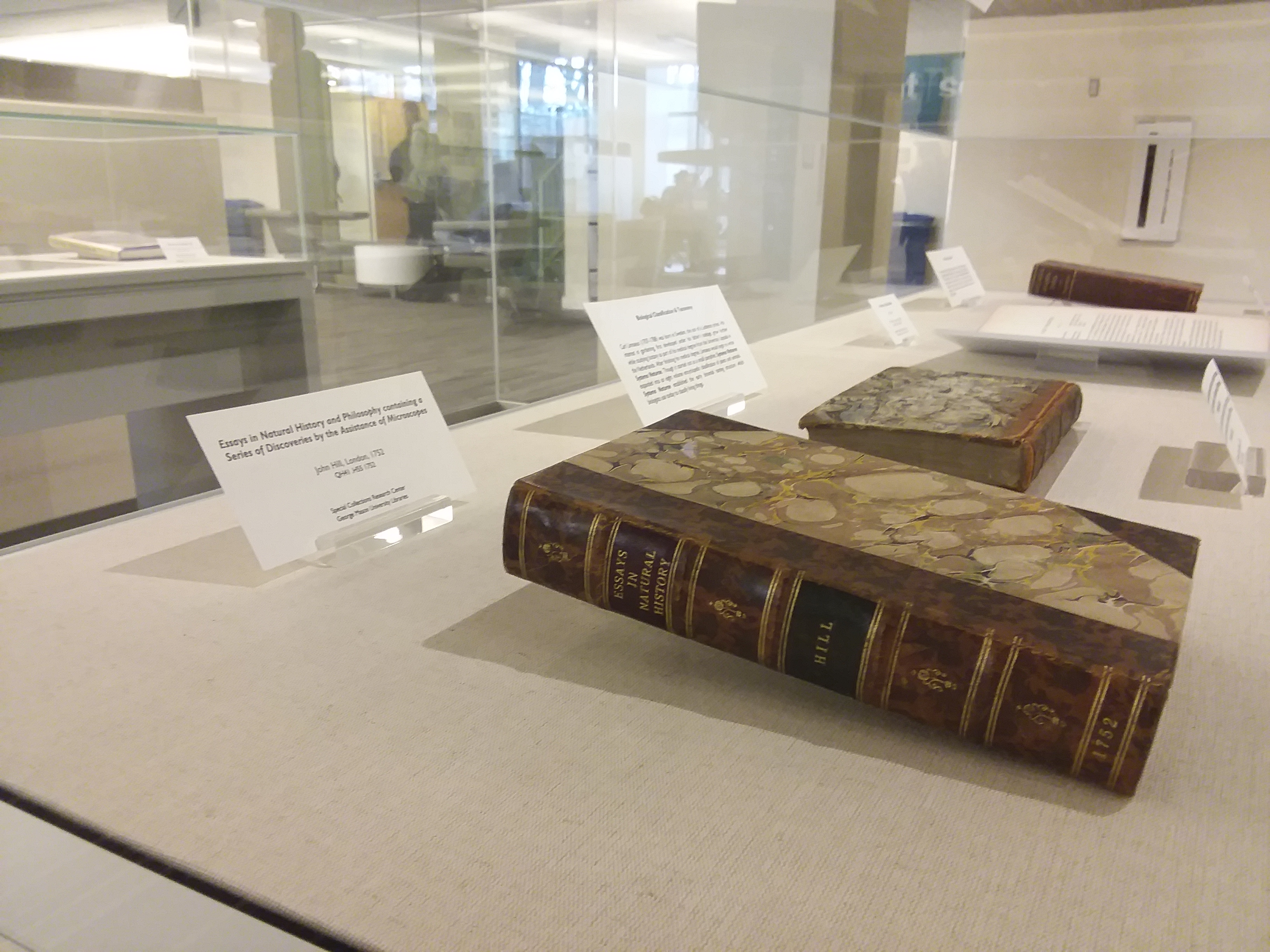This post was written by Michael Rynearson, Research Services Assistant.
Natural Science is the research and study of organisms in their environment, including animals, plants, and fungi. Historically, natural science was comprised with what we now call biology and geology. Natural scientists learned about the world around them through observation, as opposed to experimental methods of study. This exhibit features the evolution of this field and how it has influenced the modern day.
The Beginning of the Scientific Method
Sir Francis Bacon (1561-1626) was an English lawyer, statesman, philosopher, and champion of early modern science. As a philosopher, he was unsatisfied with the system of thought prevalent in the early seventeenth century. He believed natural philosophy relied too heavily on fanciful guessing and the citing of ancient authorities to establish truths of science. In its place, Sir Francis Bacon formulated a way of reasoning which relied on empirical evidence. Displayed below is Gilbert Watts’ 1674 English translation and interpretation of Bacon’s De Dignitate et Augmentis Scientiarum (“Nine Books of the Dignity and Advancement of Learning,”) itself an enlarged version of his 1605 philosophy treatise, Proficience and Advancement of Learning. Gilbert Watt’s version, titled Of the Advancement and Proficiencie of Learning, or, The Partitions of Sciences: Nine Books discusses Bacon’s methodology for science and logic.
Biological Classification & Taxonomy
Karl Linnaeus (1707-1788) was born in Sweden, the son of a Lutheran priest. His interest in gardening, first developed under his father’s tutelage, grew further while studying botany as part of his medical degree from the University Uppsala in the Netherlands. After finishing his medical degree, Linnaeus would begin to write Systema Naturae. Though it started out as a small pamphlet, Systema Naturae expanded into an eight volume encyclopedic classification of plants and animals. Systema Naturae established the early binomial naming structure which biologists use today to classify living things.
The Theory of Evolution
Charles Darwin (1809 – 1882) is best known as the “Father of Evolution.” After traveling aboard the HMS Beagle as it was surveying the coast of South America, Darwin published his journal of the voyages and Geological Observations on South America which established Darwin as an eminent geologist. Moreover, observations of the flora, fauna and fossils from this voyage were essential in the development of Darwin’s theory of evolution, published in the treatise, On the Origins of Species.
Microbiology & Pastuerization
Louis Pasteur (1822 – 1895) is an icon in the world of medical scientists. A French biologist, Pasteur would make monumental breakthroughs in the understanding of diseases and help develop vaccines to prevent them. Pasteur’s discoveries cemented germ theory as legitimate in the medical community. He created vaccines for both rabies and anthrax. Most famously, Pasteur is known for the development of his namesake process “pasteurization.” Etudes sur le vin, displayed below, outlines the early stages of his studies into understanding diseases and how to cure them.
Germ Theory
Lazzaro Spallanzani (1729 – 1799) was an Italian priest, biologist, and physiologist best known for his contributions to early modern biology and microbiology through his studies on animal reproduction and echolocation. In 1768, Spallanzani researched the theory of the spontaneous generation of microbes. In an experiment involving boiling vegetables, Spallanzani discovered that microbes present before boiling were no longer there afterward. These experiments and others paved the way for research by Louis Pasteur, who disproved the theory of spontaneous generation almost a century later. This volume, Opuscoli di Fisica Animale, E Vegetabile, is one of Spallanzani’s many works to apply the study of plants and animals toward finding human applications.
Environmental Science
Rachel Carson (1907-1964) was an American marine biologist whose interest in conservation began after World War II. Carson became concerned about the use of synthetic pesticides, and with increased use of DDT and other pesticides, she devoted herself to research on the topic. In the 1950s, Carson gained an interest in conservation, and synthetic pesticides caused environmental problems that she believed. Her research and dedication allowed her to write and publish Silent Spring in 1962. The book was one of many written by Carson that advanced the global environmental movement. Carson documents the detrimental effects the indiscriminate use of pesticides had on the environment. It accused the chemical industry of spreading disinformation and public officials of accepting industry claims unquestioningly. In response to the book and further public outcry, the United States government would ban DDT nationwide, and the U.S. Environmental Protection Agency was born.
Follow Special Collections Research Center on Social Media at our Facebook, Instagram, and Twitter accounts. To search the collections held at Special Collections Research Center, go to our website and browse the finding aids by subject or title. You may also e-mail us at speccoll@gmu.edu or call 703-993-2220 if you would like to schedule an appointment, request materials, or if you have questions. Appointments are not necessary to request and view collections.




